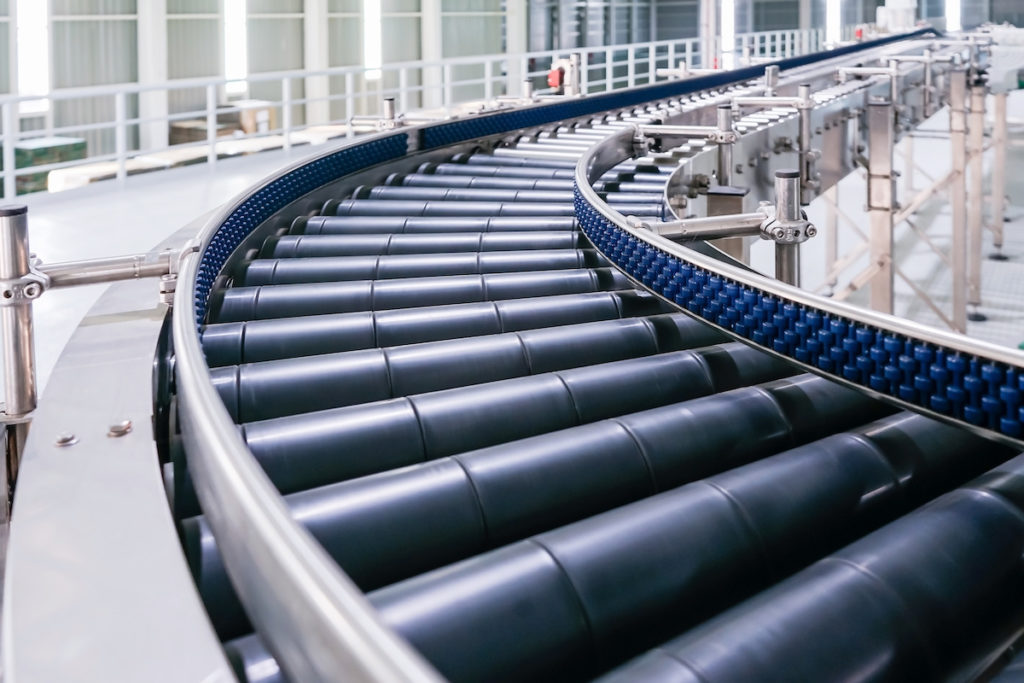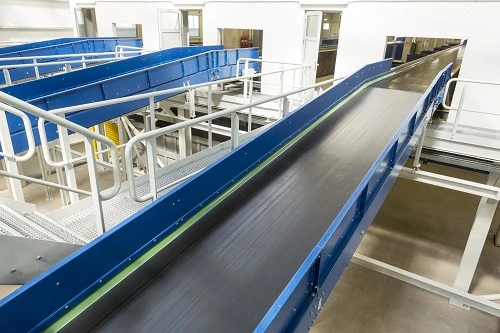Conveyor belts have been a vital part of various industries for over a century, revolutionizing the way goods and materials are transported. From the early days of manually operated belts to the modern, automated systems we have today, conveyor belt technology continues to evolve at an astonishing pace. In this blog, we’ll explore the innovative advancements in conveyor belt technology and the exciting possibilities the future holds.
A Brief History of Conveyor Belts
Before we dive into the future of conveyor belts, let’s take a step back to understand their origins and the milestones that have brought us to where we are today.
Conveyor belts were first used in the late 19th century to transport coal, but it wasn’t until the early 20th century that they were adapted for broader industrial use. Early conveyor belts were made of leather, canvas, or rubber and were operated manually, often by a team of workers.
The introduction of motorized belts in the early 20th century marked a significant advancement, allowing for more efficient and automated material handling. As technology continued to progress, conveyor belts became an integral part of various industries, from manufacturing and logistics to mining and agriculture.
Current Innovations in Conveyor Belt Technology
In recent years, conveyor belt technology has seen remarkable innovations, enhancing their efficiency, durability, and versatility. Some of the notable advancements include:
Smart Conveyor Systems: The integration of sensors, IoT (Internet of Things) technology, and automation has transformed conveyor systems into smart, data-driven machines. They can monitor performance, detect malfunctions, and optimize the flow of materials in real-time, increasing productivity and reducing downtime.
Modular Conveyor Belts: Modular conveyor belts, made up of individual interlocking modules, provide flexibility in design and assembly. They are easy to maintain and adapt to changing production needs, making them a cost-effective choice for many industries.
Energy-Efficient Design: Innovations in conveyor belt materials, like lightweight composites and advanced lubrication techniques, have led to more energy-efficient systems. These improvements reduce the carbon footprint of conveyor operations while lowering operating costs.
High-Speed and High-Capacity Belts: Conveyor belts can now achieve higher speeds and handle heavier loads with enhanced safety measures. This is especially important in industries where rapid material movement is essential.
Dust and Contaminant Control: Conveyor belt systems have been developed to minimize the release of dust, contaminants, and spillage, particularly in industries like food processing and pharmaceuticals where cleanliness is paramount.
The Future of Conveyor Belt Technology
As we look to the future, it’s evident that conveyor belts will continue to evolve and adapt to the changing needs of industries. Here are some of the exciting possibilities for conveyor belt technology in the coming years:
Robotics Integration: Conveyor belts may work hand in hand with robots for even more efficient and precise material handling. Automated robotic arms and vision systems can load and unload products from conveyor belts with remarkable accuracy.
Sustainable Materials: An increased emphasis on sustainability will drive the development of conveyor belts made from eco-friendly materials, promoting a greener and more responsible approach to industry.
3D Printing Integration: 3D printing is being explored to manufacture specialized conveyor belt components. This allows for customized and on-demand replacement parts, reducing downtime and maintenance costs.
Augmented Reality (AR) Maintenance: Technicians and operators may use AR glasses or devices to receive real-time information, instructions, and diagnostics for conveyor system maintenance, making repairs more efficient.
Blockchain Integration: Supply chains will benefit from blockchain technology to monitor the entire journey of products on conveyor belts, ensuring transparency, traceability, and compliance with safety and quality standards.
Biodegradable Belts: Research into biodegradable conveyor belts is ongoing, which could have significant implications for reducing waste in the industry.
Enhanced Safety Features: Future conveyor systems may incorporate even more advanced safety features, including AI-based predictive maintenance and collision-avoidance technology to protect both machinery and workers.

Challenges and Considerations
While the future of conveyor belt technology is exciting, it also comes with challenges. Balancing innovation with safety, reliability, and cost-effectiveness is essential. Additionally, the industry must remain mindful of cybersecurity concerns as conveyor systems become increasingly connected to the internet.
In conclusion, conveyor belt technology is evolving at an extraordinary pace, and the future holds tremendous promise. These systems are no longer just about moving materials; they are integral to the optimization of industries worldwide.
Ready to propel your business with cutting-edge conveyor solutions in the GTA? Contact Cog-Veyor Systems today and be part of the future of conveyor technology.





